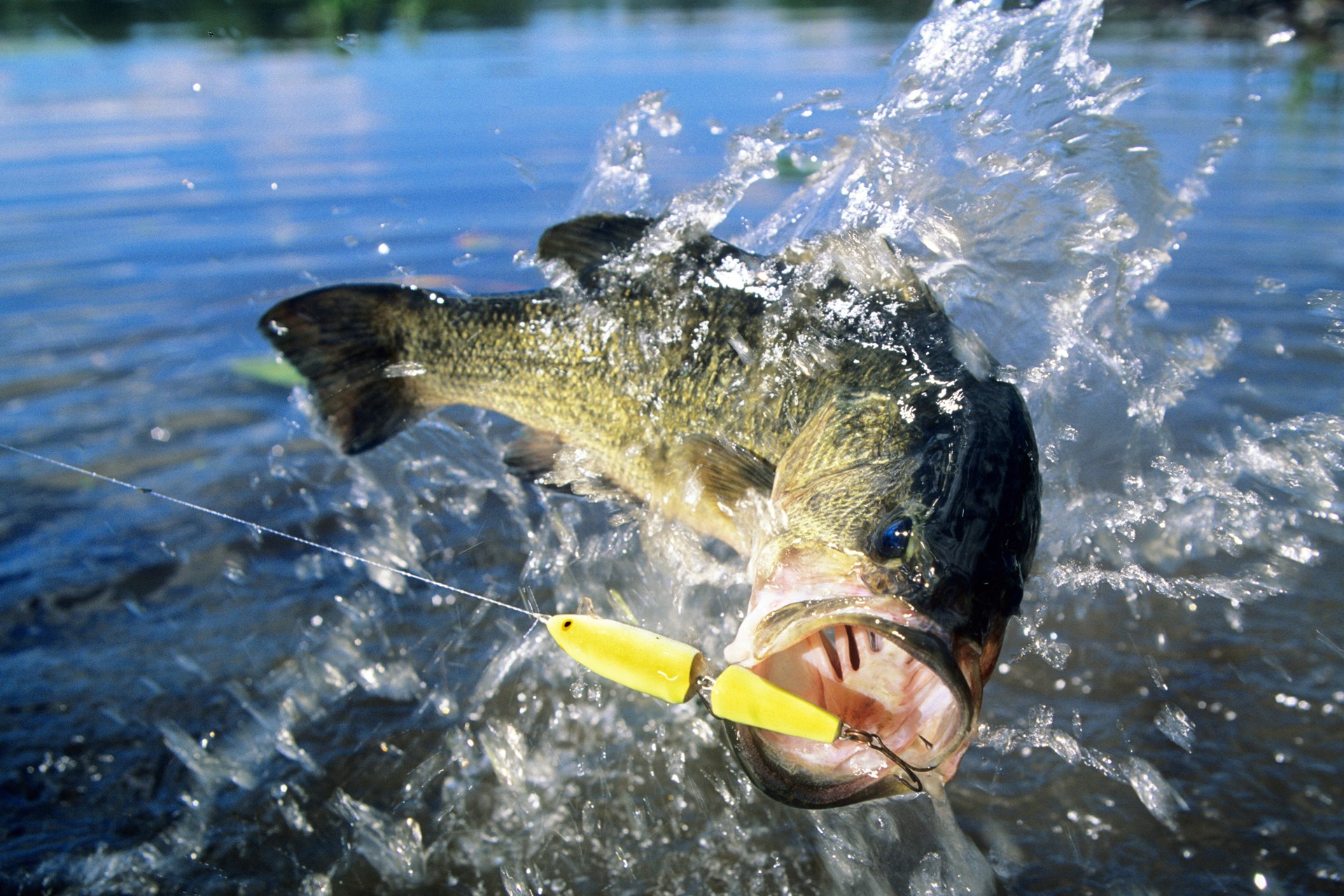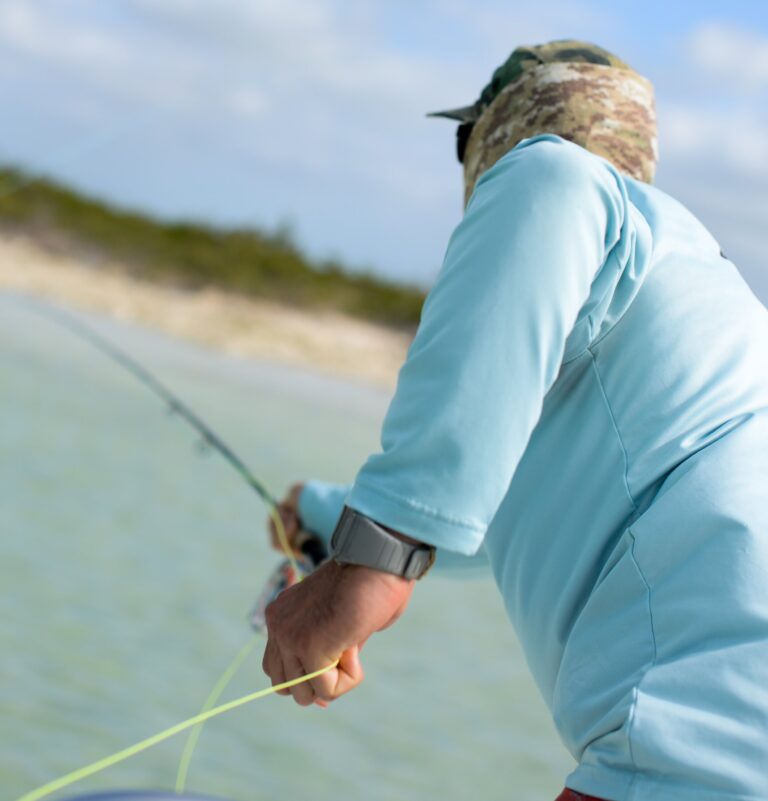The different types of flats fishing techniques include sight fishing, bait fishing, and fly fishing. Flats fishing techniques are used to target fish in shallow, clear water where they often roam in search of food.
Sight fishing involves spotting the fish and casting a bait or lure directly to them for a more precise and targeted approach. Bait fishing, on the other hand, involves using natural or artificial baits to entice the fish to bite.
Finally, fly fishing is a specialized technique that uses lightweight flies instead of traditional lures or bait. Each technique requires specific skills and equipment to maximize success in catching fish on the flats.

Credit: koa.com
1. Sight Fishing
Definition Of Sight Fishing
Sight fishing is a technique used in flats fishing where anglers target fish by visually spotting them in clear water. Instead of relying on traditional methods like casting blindly or using bait, sight fishing allows anglers to directly target specific fish species, often resulting in a more thrilling and rewarding experience.
Importance Of Sight Fishing In Flats Fishing
Sight fishing is highly valued among anglers for several reasons, including:
- Precision: Sight fishing enables anglers to precisely target fish of interest, increasing the chances of a successful catch.
- Thrill: Spotting a fish and watching it react to the lure adds an element of excitement and challenge to the fishing experience.
- Conservation: As anglers can identify their target fish, sight fishing allows for selective catch-and-release practices, promoting sustainability and preservation of fish populations.
Characteristics Of A Good Sight Fishing Location
To maximize the effectiveness of sight fishing, anglers should look for specific characteristics when choosing a location:
- Clear water: Optimal visibility is crucial for spotting fish, so sites with clear water and minimal debris are ideal.
- Shallow depths: Flats areas, which are shallow coastal zones, are prime locations for sight fishing as they provide better visibility and increased chances of seeing fish.
- Structure and cover: Look for areas with seagrass beds, rocky formations, or other structures, as these often attract fish and increase the likelihood of successful sightings.
Equipment Needed For Sight Fishing
To engage in sight fishing effectively, anglers should have the following equipment on hand:
- Polarized sunglasses: These specialized sunglasses help reduce glare and increase visibility, allowing anglers to spot fish more easily.
- Lightweight fishing rod and reel: Opt for a sensitive rod and reel combination to ensure easy maneuvering and quick response to strike opportunities.
- Lures and bait: Use a variety of lures and bait that mimic the natural prey of the target fish species.
- Fishing line and leader: Employ a strong, invisible fishing line and leader to maximize your chances of fooling wary fish.
Common Sight Fishing Techniques
When it comes to sight fishing, anglers utilize various techniques to entice and capture fish. Some common techniques include:
- Cast and retrieve: Anglers cast their lures or bait near the targeted fish and retrieve them in a manner that mimics natural prey, attracting the fish to strike.
- Popping and twitching: This technique involves using topwater lures to create noise and movement, grabbing the attention of fish and enticing them to strike.
- Presenting bait: Anglers can choose to use live or dead bait, carefully positioning it in the fish’s line of sight to provoke a response.
- Stealthy approaches: To avoid spooking fish, anglers employ quiet and careful movements, ensuring they do not disturb the fish before making their cast.
Remember, mastering your observation skills and practicing patience are essential when engaging in sight fishing. The ability to spot fish and accurately present your bait or lure is the key to success in this thrilling fishing technique.
2. Fly Fishing
Introduction To Fly Fishing In Flats
Fly fishing is a popular technique used in flats fishing, which involves casting lightweight artificial flies onto the shallow waters in search of various fish species. This method requires precision and finesse, making it an exciting and challenging endeavor for anglers.
In this section, we will explore the advantages and challenges of fly fishing in flats and delve into the different types of flies used for this type of fishing. We will also cover essential fly fishing techniques and casting techniques specific to flats fishing.
Advantages And Challenges Of Fly Fishing
Fly fishing in flats offers several advantages that make it a preferred choice for many anglers. Here are some key points to consider:
- Precise presentation: Fly fishing allows for delicate presentations of flies, mimicking the movement of natural prey and enticing fish to strike.
- Stealthy approach: Wading or poling through flats enables anglers to access shallow waters quietly, reducing the chance of spooking fish.
- Sight fishing: The clear and shallow waters of flats provide excellent visibility, allowing anglers to spot fish and target them effectively.
However, fly fishing in flats also presents its fair share of challenges:
- Wind interference: The open nature of flats can make it prone to wind, which can affect casting accuracy and fly presentation.
- Casting distance: Compared to other fishing techniques, fly fishing typically requires close-quarter casts due to the lightweight nature of flies.
- Learning curve: Mastering the art of fly casting and understanding the behavior of fish in flats may take time and practice.
Types Of Flies Used In Flats Fishing
Various types of flies are commonly used in flats fishing to imitate different aquatic creatures and entice fish to bite. Some popular types of flies used in flats fishing include:
- Clouser minnow: This versatile fly pattern imitates small baitfish and can attract a wide range of species, including bonefish and redfish.
- Shrimp and crab patterns: Flies resembling shrimps and crabs are effective for targeting species like permit and bonefish, as they mimic their natural prey.
- Popping bugs: These surface flies create commotion on the water’s surface and are particularly enticing to species like tarpon.
Essential Fly Fishing Techniques For Flats
To increase your chances of success in fly fishing in flats, it’s essential to hone specific techniques. Here are some key techniques to focus on:
- Stripping: By retrieving the fly with short, quick pulls, you can imitate the movement of prey and trigger strikes from predatory fish.
- Sight casting: Carefully scanning the flats for fish and presenting the fly accurately in front of them increases the likelihood of a successful catch.
- Line management: Proper handling and management of the fly line are crucial to maintain control over the fly and ensure accurate presentations.
Casting Techniques For Fly Fishing In Flats
Casting accurately and efficiently is vital when fly fishing in flats. Here are some casting techniques specific to this type of fishing:
- False casting: Using this technique helps create more line speed and allows for adjustments before delivering the final cast.
- Roll casting: When faced with obstacles or limited backcast space, executing a roll cast enables anglers to present the fly effectively.
- Accuracy casting: Flats fishing often requires precision, so practicing accuracy casting techniques such as sidearm or diagonal casts can significantly improve your chances of success.
Remember, mastering these fly fishing techniques and casting techniques takes time and practice. With dedication and experience, you can enhance your skills and make the most of your flats fishing endeavors.
3. Topwater Fishing
Understanding Topwater Fishing In Flats
Topwater fishing is an exhilarating technique used in flats fishing where anglers use lures that float on the water’s surface. This technique involves imitating struggling or injured baitfish to entice predatory fish, such as bonefish, redfish, or tarpon, to strike.
Understanding the key aspects of topwater fishing will help you become more effective in targeting fish in the flats.
Reasons To Use Topwater Lures In Flats Fishing
There are several reasons why using topwater lures can be advantageous in flats fishing:
- Enticing strikes: Topwater lures create commotion and noise on the water’s surface, attracting fish and provoking aggressive strikes.
- Visual excitement: The sight of a fish exploding through the water to attack a surface lure is an adrenaline-pumping experience, adding excitement to your fishing adventures.
- Coverage of shallow areas: Topwater lures are perfect for fishing shallow areas where fish are often found, such as grassy flats or mangrove shorelines.
- Weedless design: Many topwater lures are designed to be weedless, allowing you to fish in areas with dense vegetation or structure without getting snagged.
Types Of Topwater Lures For Flats
When it comes to topwater fishing in flats, various types of lures can be effective. Here are some popular options to consider:
- Walk-the-dog lures: These lures have a slender shape and a flat face, allowing you to create a zigzag or “walk-the-dog” action by twitching your rod tip during retrieval.
- Poppers: Poppers have a concave mouth that produces loud popping or splashing sounds when retrieved. This action imitates prey struggling on the water’s surface, attracting fish to strike.
- Propbaits: Propbaits have one or more propellers that spin as you retrieve them, creating vibrations and a disturbance on the water’s surface that catches the fish’s attention.
- Buzzbaits: These lures have a spinning blade on a wire arm that creates a buzzing noise and surface disturbance when retrieved quickly. They excel at attracting fish in low-light or murky conditions.
Techniques For Using Topwater Lures Effectively
To maximize your success with topwater lures in flats fishing, it’s essential to master a few effective techniques:
- Proper retrieval speed: Experiment with different retrieval speeds to find what triggers the fish’s interest. Vary your retrieves, including steady, erratic, or pause-and-go actions.
- Target structure and cover: Cast your lure near visible structure or cover, such as mangroves, oyster bars, or submerged rocks, as predatory fish often lurk in these areas.
- Stealthy approach: Approach your fishing spot quietly to avoid spooking the fish. Being aware of your casting distance and using stealthy movements will increase your chances of success.
- Timing is everything: Consider the time of day and tide movements when planning your topwater fishing. Early morning, late afternoon, and tide changes are typically more productive times.
Tips For Success In Topwater Fishing On Flats
Boost your success in topwater fishing on flats with these valuable tips:
- Match the hatch: Observe the baitfish present in the flats and choose a lure that mimics their size, color, and action to increase your chances of enticing strikes.
- Be patient: Topwater fishing often requires patience. Allow the fish time to notice your lure and resist the urge to retrieve it too quickly.
- Stay alert: Fish can strike at any moment when using topwater lures, so always stay focused and ready to react when you see or feel a strike.
- Upgrade your hooks: Upgrading the hooks on your topwater lures to stronger and sharper ones will help increase your hook-up ratio and prevent fish from escaping.
Now that you have a better understanding of topwater fishing in flats, the reasons to use topwater lures, the different types available, and effective techniques and tips, you’re well-equipped to head out to the flats and try your hand at this thrilling technique.
Happy fishing!
Conclusion
Whether you are a seasoned angler or a beginner looking to try your hand at fishing, understanding the different types of flats fishing techniques can enhance your overall fishing experience. From sight fishing to fly fishing, there are various methods you can employ to target fish in shallow water environments.
Each technique requires a specific set of skills and equipment, allowing you to adapt to different conditions and fish species. By mastering these techniques, you can increase your chances of success and enjoy the thrill of landing that big catch.
Whether you prefer the challenge of stalking fish on foot or cruising in a boat, flats fishing offers a unique and rewarding experience. So, gear up, practice your casting, and get ready to explore the endless possibilities that flats fishing has to offer.
Happy fishing!


